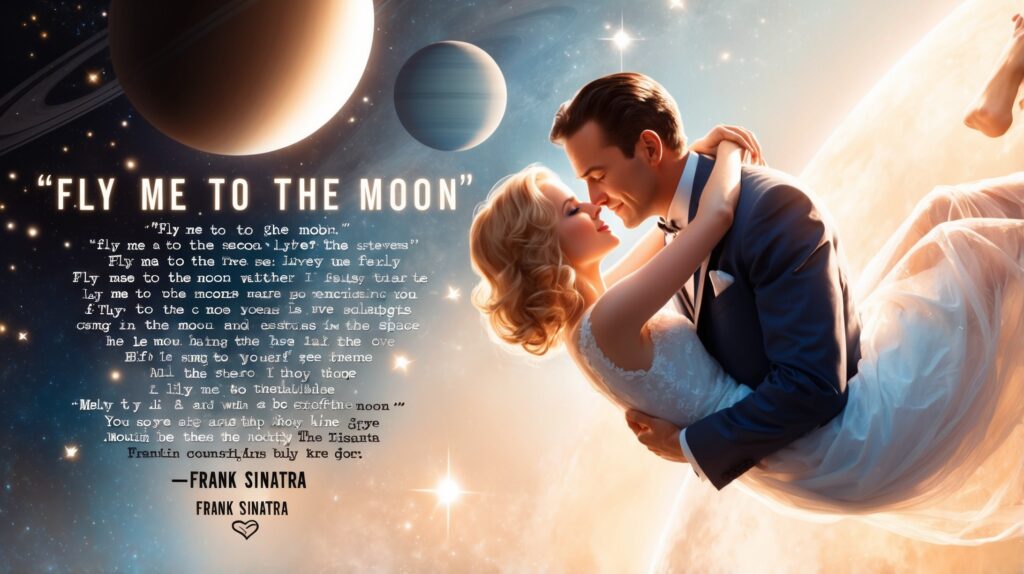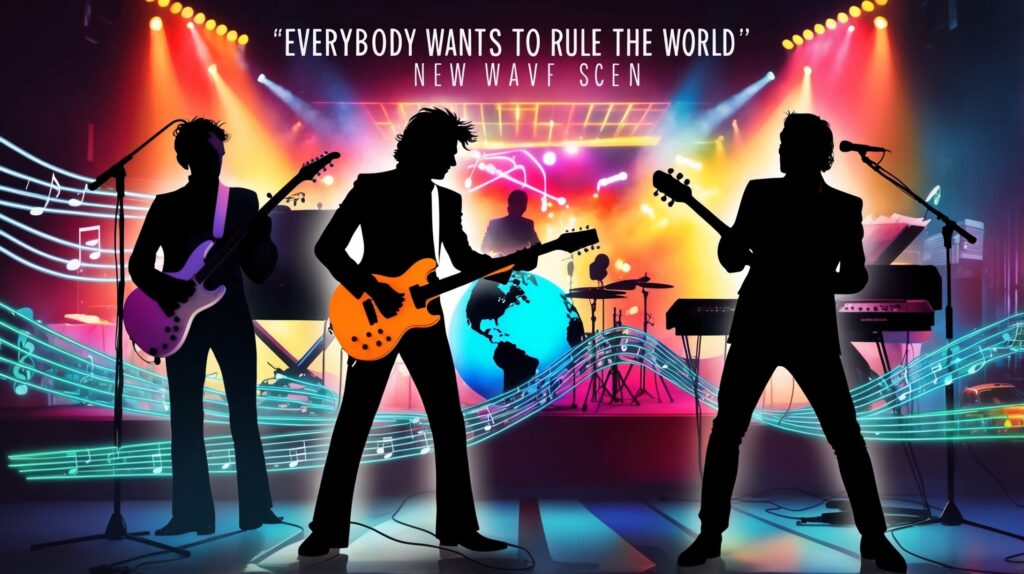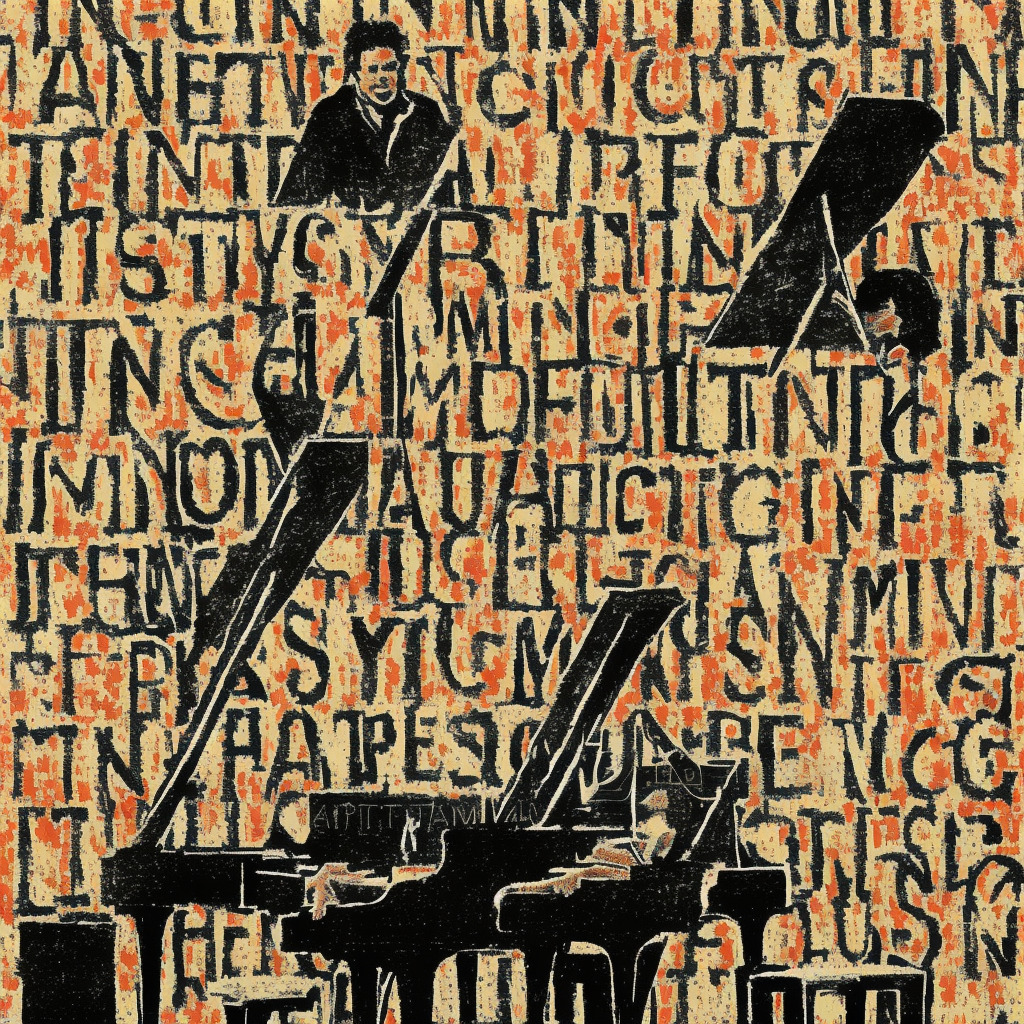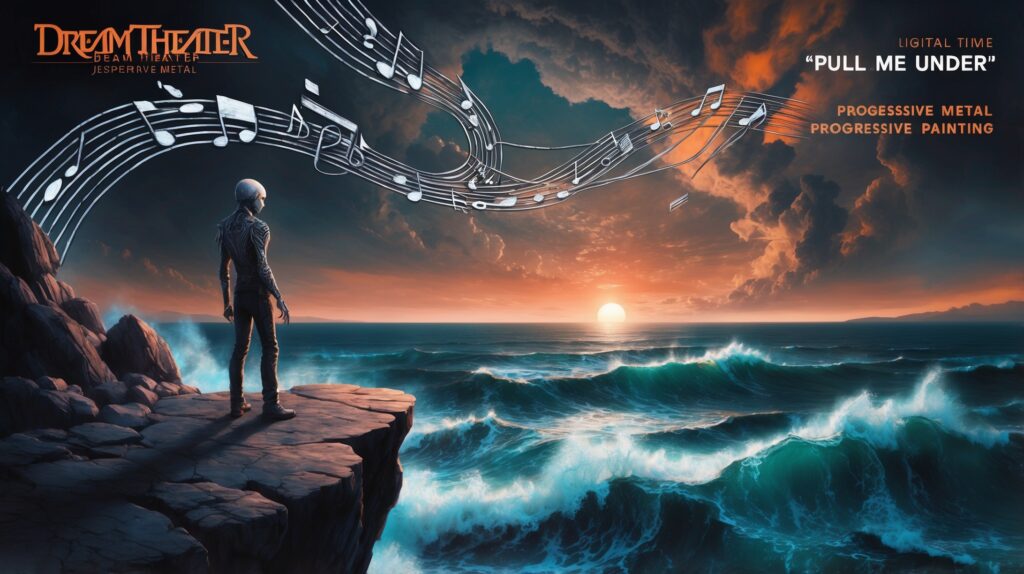The Timeless Voice of Frank Sinatra
Fly Me to the Moon’ stands as a defining piece in Frank Sinatra’s illustrious career, showcasing his artistic brilliance and timeless influence.
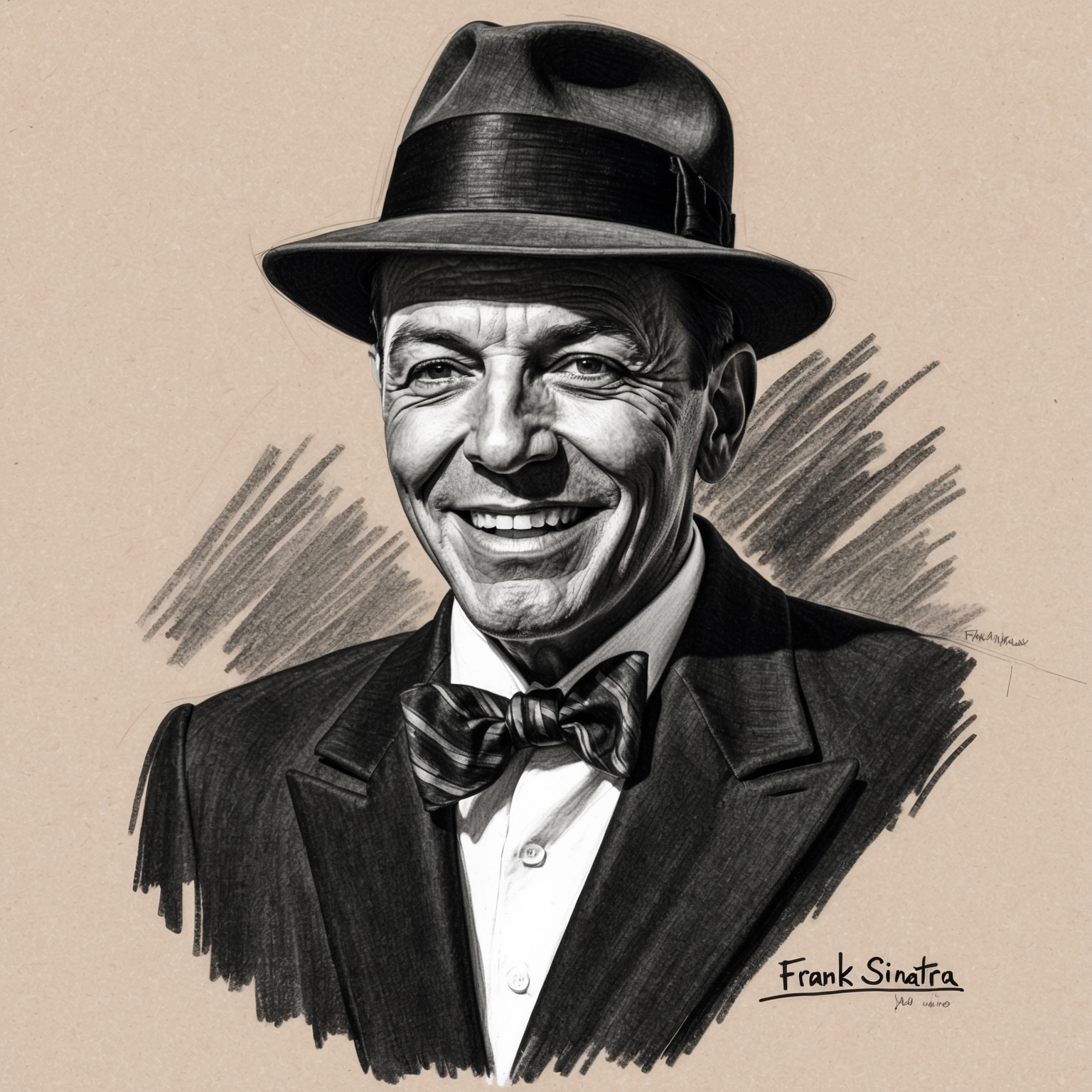
When one thinks of Frank Sinatra, images of Old Hollywood glamour, sharply tailored suits, and an unmistakable voice instantly come to mind. ‘Fly Me to the Moon,’ a song indelibly linked to Sinatra, encapsulates the timeless charm and sophistication of his musical career. Though not originally written by him, Sinatra’s rendition became the definitive version, transforming the song into an emblem of elegance and romance. This version was released in 1964 on the album ‘It Might As Well Be Swing,’ a collaboration with the Count Basie Orchestra arranged by Quincy Jones. Sinatra’s association with this song is so profound that many are unaware it wasn’t his from the start, testimony to his ability to make any song his own.
Born in Hoboken, New Jersey, in 1915, Frank Sinatra’s journey to stardom was anything but ordinary. As a child, he was fascinated by Bing Crosby and dreamt of singing on stage. He worked tirelessly throughout the 1930s and 1940s, slowly making a name for himself in the music industry. Sinatra gained prominence in the early 1940s with his swing-style songs and his smooth, charming voice that captivated audiences worldwide. By the time ‘Fly Me to The Moon’ came into Sinatra’s repertoire, he was already a well-established icon within the music industry, illustrating the level of impact his career had on American entertainment.
The 1960s marked a vibrant era in Sinatra’s career, characterized by numerous successful collaborations and hits that continue to resonate with audiences today. Sinatra’s work with artists like Count Basie and arrangements by Quincy Jones during this period produced some of the most legendary tracks in the jazz and pop genres. The music scene at the time was transforming, with artists branching out into new, innovative sounds, and Sinatra’s invigorated takes—filled with brassy jazz orchestrations and his impeccable vocal prowess—fit perfectly into the swinging 60s cultural milieu. Together with his signature charisma, it established a soundscape that was both contemporary and reflective of his enduring style.
The Mastermind Behind ‘Fly Me to the Moon’: Bart Howard
Bart Howard’s composition of ‘Fly Me to the Moon’ showcases his mastery in jazz-infused songwriting. His journey from piano player to lauded composer is a testament to his influence in the music industry.

Bart Howard, the brilliant composer behind ‘Fly Me to the Moon,’ carved an indelible mark in the world of music with this timeless piece. Born in Burlington, Iowa, in 1915, Howard’s musical journey began with the piano, which he played professionally for dance bands in his early years. Moving to New York City in the 1930s, he immersed himself in the jazz scene, honing his craft in cabarets and intimate nightclubs. Despite penning numerous songs, it was ‘Fly Me to the Moon,’ originally titled ‘In Other Words,’ that propelled him into the spotlight, cementing his legacy as a distinguished songwriter.
Howard’s musical style is a fusion of sophisticated jazz tones and the lyrical storytelling typical of the mid-20th century American music scene. His influences range from the Great American Songbook to the vibrant jazz culture of New York, ultimately shaping his compositions into masterpieces of elegance and expression. The sensitivity and romanticism embedded in his music resonate with the nuanced charm of his influences, captivating audiences across generations.
While Howard might not have enjoyed widespread collaborations as some of his contemporaries did, his partnership with publisher Tommy Wolf was significant. Tommy was instrumental in bringing ‘Fly Me to the Moon’ to a broader audience. Their collaboration underscores how critical partnerships can impact the trajectory of a musical piece, effectively transforming Howard’s intimate creation into a timeless anthem embraced by legends like Frank Sinatra.
Bart Howard’s role in the creation of ‘Fly Me to the Moon’ extends beyond that of a mere composer. He crafted a melody that beautifully intertwines with the song’s romantic lyrics, setting a tender yet adventurous tone that defines the track. His ability to mesh a simplistic melody with rich emotional depth showcases his signature touch.
The critical reception of Howard’s work on ‘Fly Me to the Moon’ was overwhelmingly positive, with the song becoming a standard in the jazz and pop repertoires. Frank Sinatra’s renowned version elevated the song to legendary status, though the composition’s elegant simplicity was praised from the outset. Bart Howard’s musical genius in ‘Fly Me to the Moon’ not only contributed to its success but has also left a lasting impact on the music industry, influencing countless other artists and performers in the genre.
Celebrating Legacy: Awards, Covers, and Appearances
Dive into the legacy of ‘Fly Me to the Moon’, exploring its multiple covers, cultural impacts, and surprising connections to space exploration.

‘Fly Me to the Moon’ has transcended its era, captivating audiences for decades with its enchanting melody and timeless appeal. While the song itself has not collected a hefty amount of traditional awards, its impact is felt through numerous accolades and recognitions. Over the years, it has become one of Frank Sinatra’s signature pieces, cementing its place in the annals of music history.
The song’s charm has inspired a multitude of artists to offer their renditions, adding their unique touch to this classic. Notably, Tony Bennett, one of Sinatra’s contemporaries, added his soulful charm, while Diana Krall brought a jazz-infused piano rendition that reintroduced the song to modern audiences. The soulful Southern stylings of Bobby Womack and the powerful vocals of Michael Bublé have also paid tribute to ‘Fly Me to the Moon’, demonstrating its versatility and broad appeal.
Beyond radio and vinyl, ‘Fly Me to the Moon’ has frequently graced popular culture. It featured prominently in the romantic film ‘Once Around’ in 1991 and set the mood in the hit series ‘Mad Men’. Its ethereal resonance even found a place in space exploration history, being used by NASA during the Apollo missions, encapsulating the aspirational spirit of reaching for the stars.
Chart Success and Cultural Resonance
Frank Sinatra’s “Fly Me to the Moon” wasn’t a traditional chart-topper but found lasting impact as a cultural classic, thanks to Sinatra’s unparalleled interpretation.
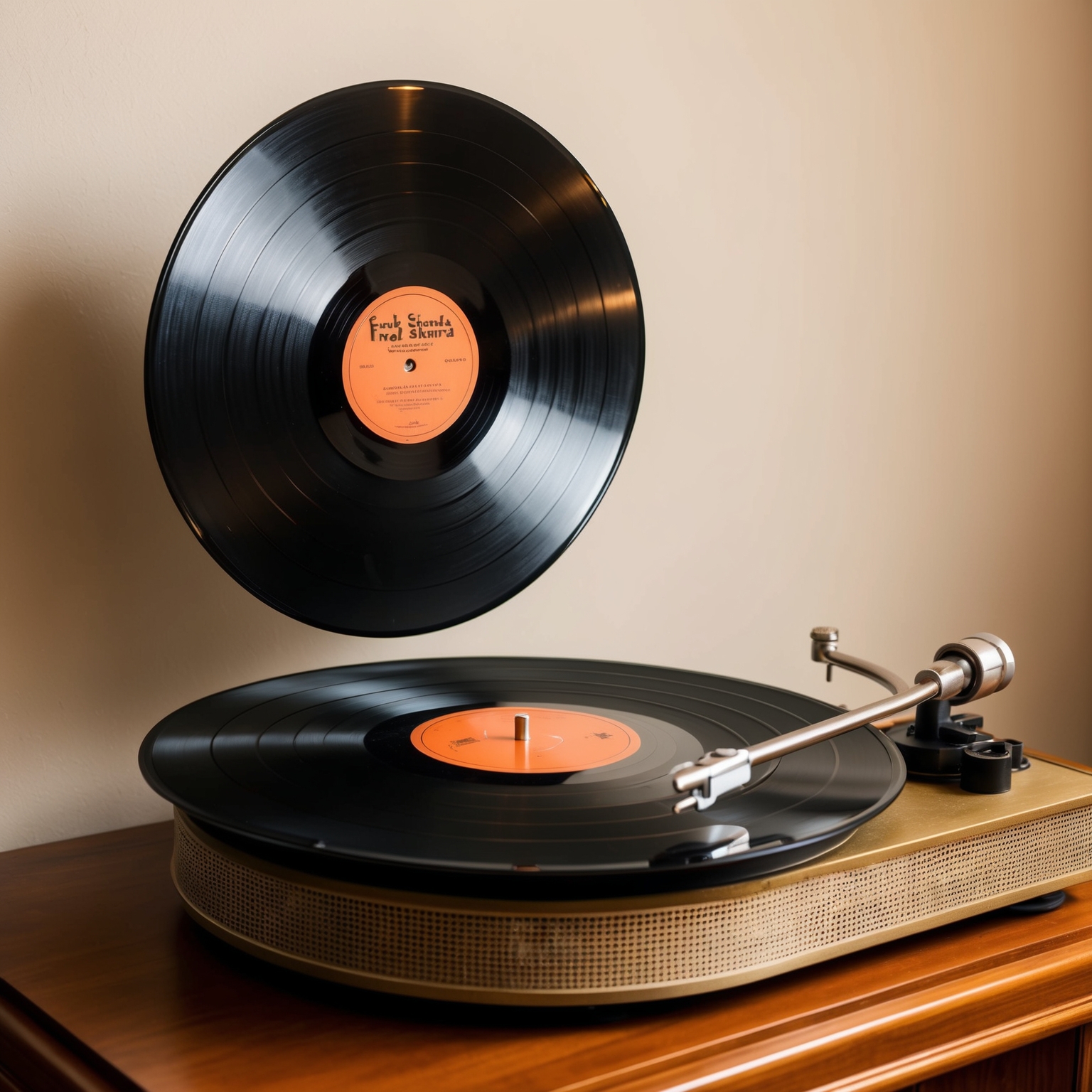
“Fly Me to the Moon,” while indelibly linked to Frank Sinatra’s iconic vocal performance, his version of the song initially did not chart at the top like some of his other illustrious hits. Released in 1964 as part of his album It Might as Well Be Swing, this rendition of the song didn’t manage to secure a high spot in the traditional pop charts of the time. However, its enduring popularity can’t be overstated; it found a significant foothold in the cultural psyche that transcended its initial chart metrics.
Interestingly, compared to other tracks of the era, the song’s presence was more pronounced in jazz and adult contemporary circuits rather than dominating mainstream charts outright. This aligns with Sinatra’s unique position in the music industry—while he was undoubtedly a chart-topping artist, many of his most beloved and timeless songs achieved their success through avenues beyond simple chart placement.
In terms of Sinatra’s career trajectory, “Fly Me to the Moon” is a testament to his ability to take a song and elevate it beyond its original scope, imprinting his signature style upon it. This song didn’t serve as a breakthrough hit for Sinatra, given his already established stature, but it reinforced his ongoing relevance and adaptability in the changing musical landscape of the 1960s. Within the broader arc of his career, the song reinforced his image as an effortlessly cool interpreter of modern standards.
Visual Interpretations and Live Renditions of ‘Fly Me to the Moon’
Frank Sinatra’s ‘Fly Me to the Moon’ lacks an official music video, but live performances and fan-created visuals capture its timeless essence.
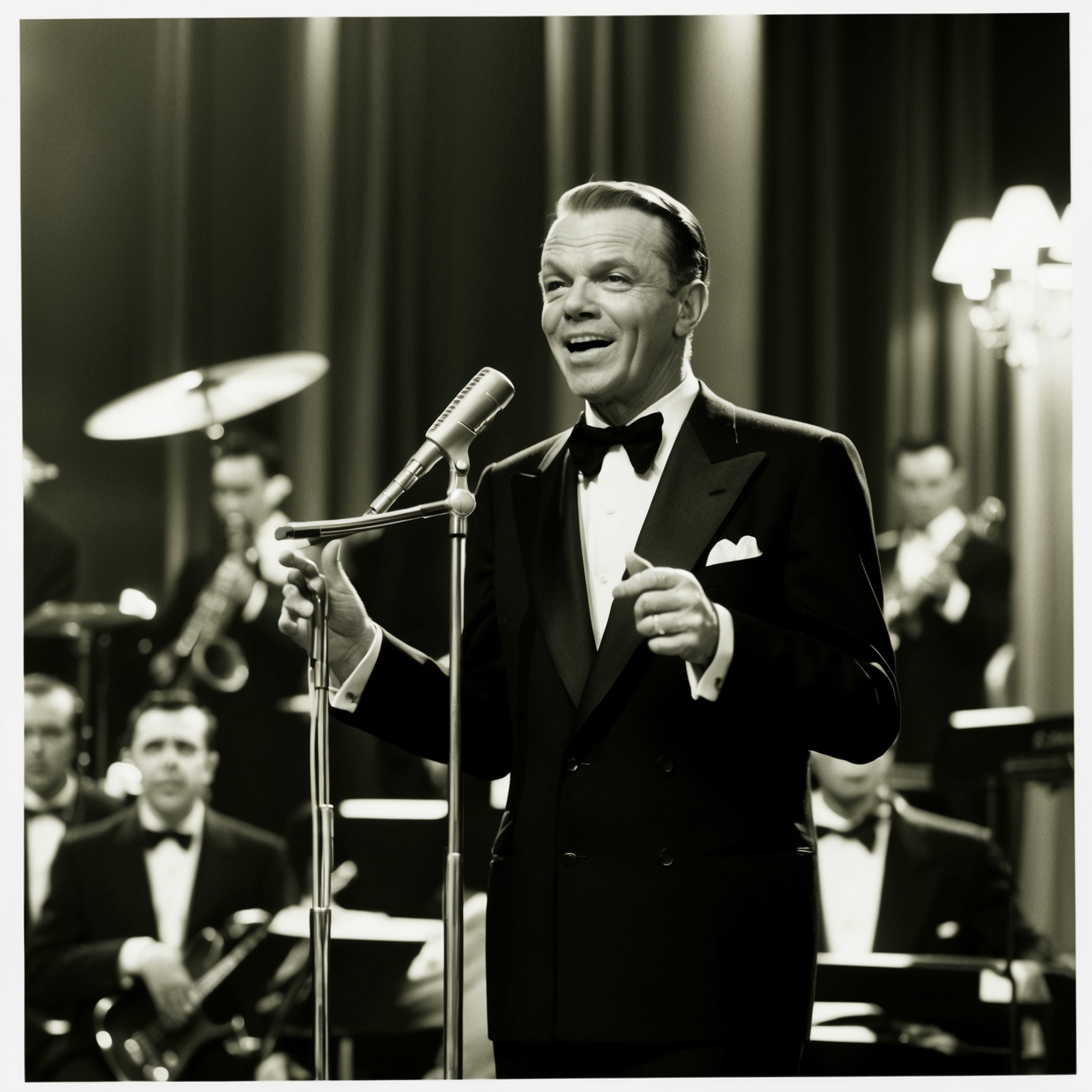
Frank Sinatra’s ‘Fly Me to the Moon’ is one of those timeless classics that transcends the need for an official music video to make an impact. Although there is no dedicated music video produced during its original release, the song has lived on through a myriad of creative visual interpretations and live performances.
One of the most notable presentations of the song can be found in Sinatra’s numerous live performances, which were often televised, capturing his charismatic stage presence and the magic of the song. In these performances, the stage visuals combined with Sinatra’s smooth, effortless delivery to create a memorable experience for viewers. These live renditions significantly contributed to the song’s enduring popularity and remain accessible through various media platforms today.
Fan-made videos and tribute performances have also played a significant role in keeping ‘Fly Me to the Moon’ alive in modern culture. Many fans have created visual montages, often using a combination of vintage footage and thematic imagery related to space and the moon to align with the song’s lyrics. These interpretations have been widely shared on social media and video streaming platforms, further spreading the song’s appeal.
The Intricate Fabric of ‘Fly Me to the Moon’
Explore the musical structure of ‘Fly Me to the Moon,’ from its key and tempo to its rich harmonies and big band influence, illustrating Sinatra’s exceptional adaptability in jazz.

The song ‘Fly Me to the Moon’, immortalized by Frank Sinatra, showcases a deceptively simple yet intricately crafted musical structure. Originally composed in a 3/4 waltz time, the rendition that Sinatra popularized was rearranged by Quincy Jones into a swinging 4/4 time. This shift not only modernized the song, but also expanded its jazz appeal, allowing Count Basie’s orchestrations to deeply influence the track’s groove and general tempo.
In Sinatra’s version, the song is set in the key of C major, providing a bright and optimistic tonality that perfectly complements its romantic lyrical themes. The chord progression is a classic jazz standard, featuring dominant-seventh chords and modulations that give the song its characteristic jazz sound. The tempo of the song is moderate, inviting listeners into a relaxed yet uplifting musical journey.
Harmonically, Sinatra’s version uses a rich big band arrangement, with a full brass section that punctuates the song and provides a lush backdrop to Sinatra’s smooth vocal lines. The rhythm section incorporates a steady walking bass and crisp jazz drums, creating a vibrant rhythm. Compared to other Sinatra recordings, ‘Fly Me to the Moon’ stands out as a definitive swing piece that continues to influence his discography, reflecting a matured phase in his career with grand orchestral compositions.
An interesting anecdote from the recording session is that it took place at the iconic United Western Recorders studio in Los Angeles, known for its unmatched acoustics. Quincy Jones’ expert production skills are palpable throughout, ensuring the balance of instruments highlights Sinatra’s vocals while maintaining the song’s jazzy feel. This recording, rich in sound and texture, becomes a testament to Sinatra’s ability to adapt and thrive in a shifting musical landscape.
Exploring the Lyrical Depths of ‘Fly Me to the Moon’
Dive into the lyrical universe of ‘Fly Me to the Moon’. Explore its themes of romantic idealism and cosmic escapism, and how literary devices enrich its timeless allure.
Let me play among the stars
And let me see what spring is like on
A-Jupiter and Mars
In other words
Hold my hand
In other words
Baby, kiss me
…
******* This Lyrics is NOT for Commercial use *******
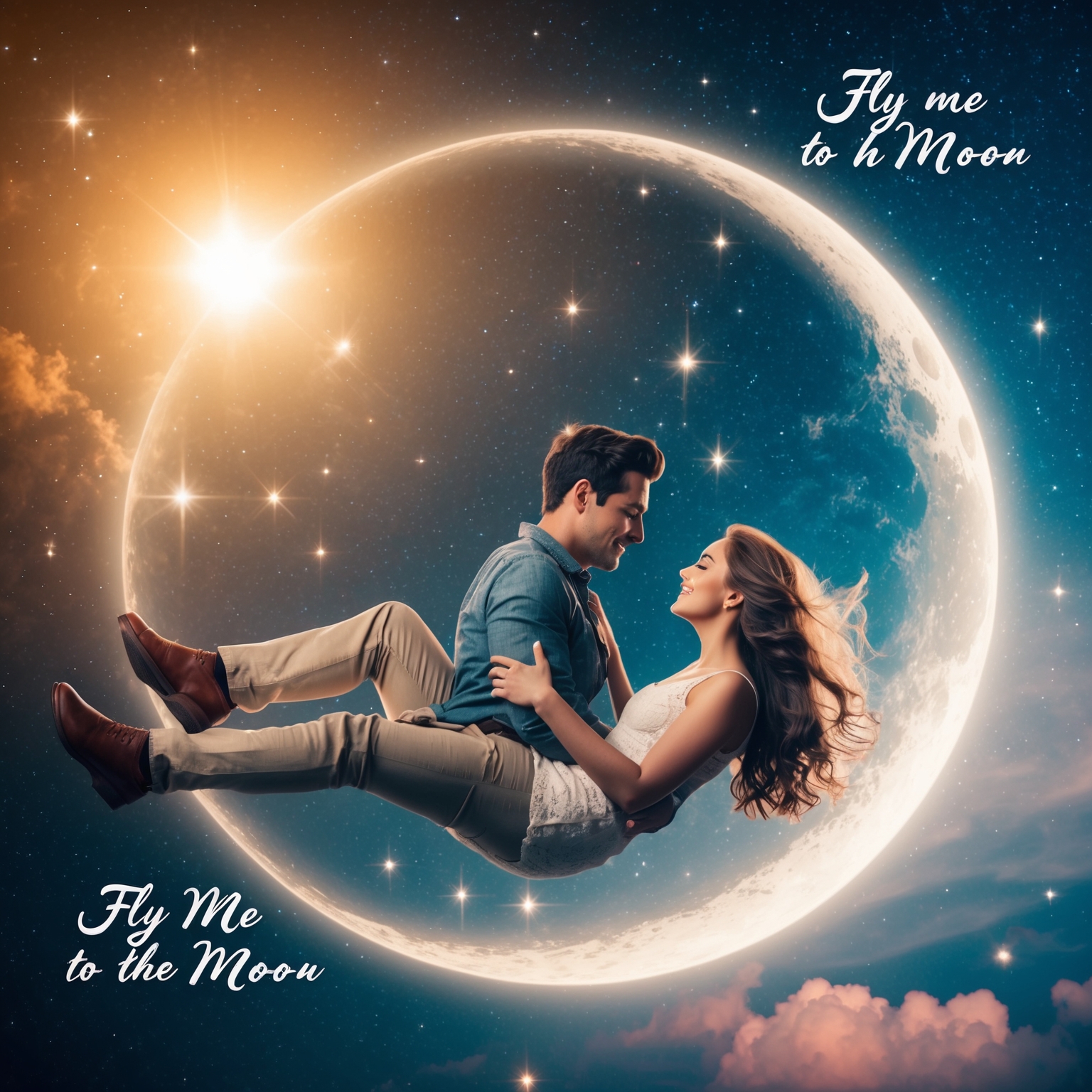
Released at a time when the world was looking to the stars with a blend of wonder and ambition, the lyrics of ‘Fly Me to the Moon’ encapsulate a yearning for exploration both literal and figurative. At its core, the song harbors themes of romantic idealism, with its vivid imagery painting a picture of fantastical escapism. The desire to ‘play among the stars’ suggests a longing for experiences beyond the earthly realm, creating a metaphor for love that transcends the ordinary boundaries.
The narrative is simple yet profound, expressed in a first-person perspective that brings a direct and personal connection to the lyrics. This narrative choice effectively conveys intimacy and desire, immersing the listener into a dreamy atmosphere. The repetition of phrases such as ‘In other words’ acts not only as refrain but also deepens the emotional resonance by focusing on genuine expressions of affection. This storytelling technique makes the song not just about space exploration but a heartfelt plea for closeness and love.
Literary devices imbue the song with artistic elegance, where simple yet impactful metaphors enhance its emotive power. The ‘moon’ and ‘stars’ serve as metaphors for aspiration and beauty, while the request to ‘hold my hand’ is a down-to-earth appeal that balances the cosmic dreaming with human warmth. The rocket-like rhythm of the verses and smooth transitions between sentiments illustrate the seamless marriage of melody and message. Notably, the song has been compared to other works from the American Songbook genre, where it stands out with its unique cosmic-colloquial blend.
Did you know? 🚀 Frank Sinatra’s ‘Fly Me to the Moon’ was played on the Apollo 10 mission to orbit the moon! Truly a track out of this world! 🌕✨ #FrankSinatra #FlyMeToTheMoon #SpaceJazz tinyurl.com/pfmft6tw
Click to Tweet

